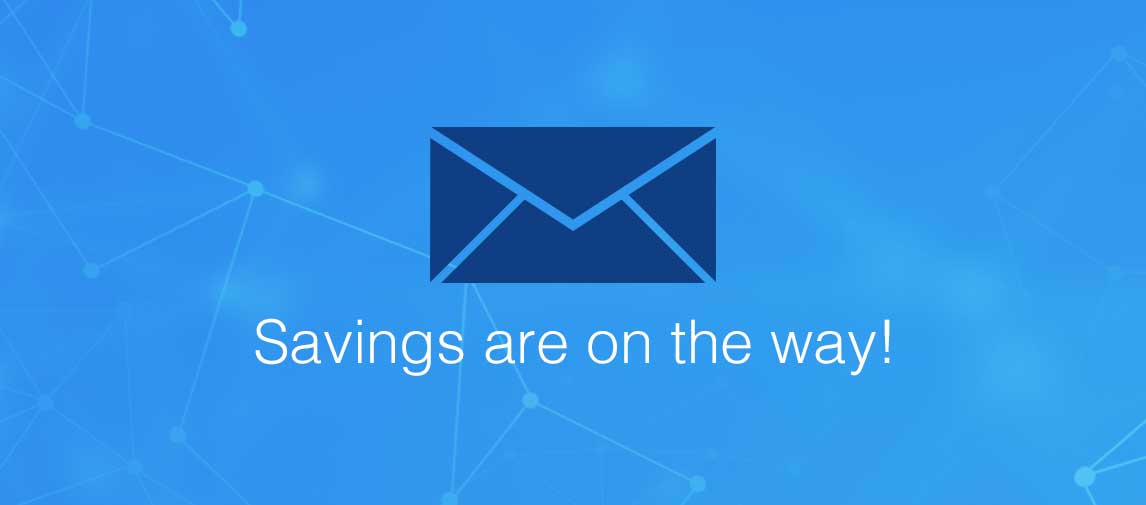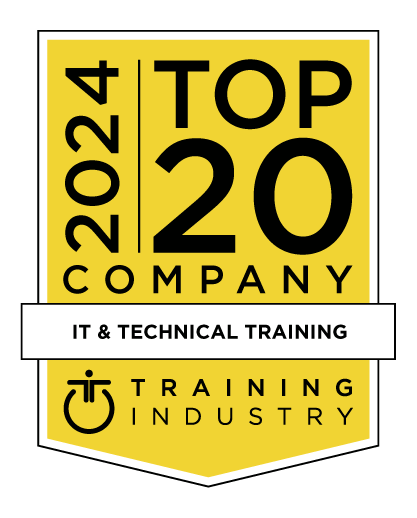title
Please take a moment to fill out this form. We will get back to you as soon as possible.
All fields marked with an asterisk (*) are mandatory.
Microsoft 10982 Supporting and Troubleshooting Windows 10 Performance Course
Course Description
Overview
This course is designed to provide students with the knowledge and skills required to support and troubleshoot Windows 10 PCs and devices in a Windows Server domain environment. These skills include understanding of Windows 10 features, how they can be used in an Active Directory environment and how to troubleshoot them.
Students who seek certification in the following exams will also benefit from this course:
- 70-697, Configuring Windows Devices.
- 70-698, Installing and Configuring Windows 10
This is a Performance Course with additional after-course resources and benefits.
It is also available as a standard five-day classroom course.
Note: If you are redeeming Software Assurance Training Vouchers (SATVs) for this course then a five-day voucher is required.
Objectives
After completing this course, students will be able to:
- Describe the processes involved in planning and using a troubleshooting methodology for Windows 10.
- Troubleshoot startup issues and operating system services on a Windows 10 PC.
- Resolve issues that pertain to hardware devices and device drivers.
- Troubleshoot Windows 10 devices remotely.
- Troubleshoot issues that pertain to network connectivity.
- Troubleshoot client configuration failures and issues with application of Group Policy Objects (GPOs).
- Troubleshoot issues related to user settings.
- Troubleshoot remote-connectivity issues.
- Resolve issues related to accessing resources from devices that are domain-joined.
- Resolve issues related to accessing resources from devices that are not domain-joined.
- Troubleshoot issues that pertain to application installation and operation.
- Maintain a device running Windows 10.
- Recover a device running Windows 10.
Audience
The primary audience for this course is the Enterprise Desktop Support Technician (EDST), who provides Tier 2 support to users running Windows 10 personal computers (PCs) and devices in medium to large enterprise organizations, within a Windows domain environment. EDSTs focus on a broad range of technical issues for Windows operating systems (OSs), devices, cloud services, applications, networking, and hardware support. In the overarching scenario, if an Enterprise offers the service, the EDST is asked to support it.
The key responsibilities include resolving technical issues pertaining to Windows 10 installation and migration, activation, performance, profiles, settings; and device synchronization. Some other key responsibilities include local and remote network access; access to applications, access to data and printers; authentication, Endpoint security and policy; OS and data recovery.
The secondary audience for this course are IT professionals who administer and support Windows 10 desktops, devices, users, and associated network and security resources. Students who seek certification in the following exams will also benefit from this course:
- 70-697, Configuring Windows Devices
- 70-698, Installing and Configuring Windows 10
We can also deliver and customise this training course for larger groups - saving your organisation time, money and resources. For more information, please contact us on 1800 853 276.
Prerequisites
- Networking fundamentals, including Transmission Control Protocol /Internet Protocol (TCP/IP), User Datagram Protocol (UDP), and Domain Name System (DNS).
- Microsoft Active Directory Domain Services (AD DS) principles.
- Understanding of the Public Key Infrastructure (PKI) components.
- Windows Server 2016 fundamentals.
- Microsoft Windows Client essentials; for example, experience with Windows 10 or knowledge from the courses 20697-1 and 20697-2.
Topics
Module 1: Implementing a Troubleshooting Methodology
This module explains the processes of establishing and using a troubleshooting methodology in Windows 10. This module also covers various Windows fundamentals, high-level architecture, and often-used troubleshooting tools. It also explains the role of an EDST (Enterprise Desktop Support Technician) in a Windows 10 environment.
Lessons
- Overview of Windows 10
- Introduction to the EDST Job Role
- Overview of the Troubleshooting Steps
- Troubleshooting Tools
Lab : Implementing a Troubleshooting Methodology
- Implementing a Troubleshooting Methodology
Lab : Using Troubleshooting Tools for Windows 10
- Using Troubleshooting Tools
Module 2: Troubleshooting Startup Issues
This module describes how to identify and troubleshoot issues that affect the Windows 10 operating system's ability to start, and how to identify problematic services that run on the operating system. It also describes how to use the Windows 10 advanced troubleshooting tools, collectively known as the Windows Recovery Environment (Windows RE).
Lessons
- Overview of the Windows 10 Startup Recovery Environment
- Troubleshooting Startup Settings
- Troubleshooting Operating System Services Issues
- Recovering BitLocker-Protected Drives
Lab : Troubleshooting Startup Issues
- Resolving a Startup Issue (1)
- Resolving a Startup Issue (2)
Lab : Recovering BitLocker-Encrypted Drives
- Recovering a BitLocker-Encrypted Drive
- Creating a New BitLocker Password
Module 3: Troubleshooting Hardware and Device Drivers
This module explains how to support users that utilize a multitude of devices that run Windows 10. It will also describe how an operating system uses device drivers, and how you can troubleshoot hardware devices and device drivers. The module also covers how to monitor the reliability of a Windows 10 device and troubleshoot any issue that might occur.
Lessons
- Troubleshooting Device Driver Failures
- Overview of Hardware Troubleshooting
- Troubleshooting Physical Failures
- Monitoring Reliability
- Configuring the Registry
Lab : Troubleshooting Device Driver Issues
- Troubleshooting a Missing Device Driver
- Resolving Hardware Problems
- Resolving Device Driver Problem
- Configuring Group Policy Settings to Control Device Installation
Lab : Troubleshooting Hardware Issues
- Diagnosing Memory and Troubleshooting Failed Disk Redundancy
- Accessing a Volume from a Failed Computer
Module 4: Troubleshooting Remote Computers
The focus of this module is on using tools that are designed specifically to facilitate remote management connections. This module explores three ways in which you can remotely connect to and manage remote computers: Remote Desktop, Windows Remote Assistance, and Windows PowerShell remoting.
Lessons
- Using Remote Desktop
- Using Remote Assistance
- Remoting with Windows PowerShell
Lab : Troubleshooting Remote Computer by using Remote Desktop and Remote Assistance
- Using Remote Desktop
- Using Remote Assistance
Lab : Troubleshooting Remote Computer by using Windows PowerShell
- Using Windows PowerShell Remoting
Module 5: Resolving Issues with Network Connectivity
This module explains the tools that you can use to set up and troubleshoot both wired and wireless network connections more efficiently. This module also explains how to support your organization's network infrastructure, and how to use these tools to configure and troubleshoot network connections.
Lessons
- Determining Network Settings
- Troubleshooting Network Connectivity
- Troubleshooting Name Resolution
Lab : Resolving Network Connectivity Issues
- Resolving a Network Problem (1)
- Resolving a Network Problem (2)
- Troubleshooting a Wireless Network
Module 6: Troubleshooting Group Policy
This module provides an overview of Group Policy and describes how to apply GPOs to computers. It also explains how to resolve configuration problems and issues with applying GPOs.
Lessons
- Overview of Group Policy Application
- Resolving Client-Configuration Failures and GPO Application Issues
Lab : Troubleshooting Group Policy Application Issues
- Resolving Group Policy Application (1)
- Resolving Group Policy Application (2)
- Resolving Group Policy Application (3)
Lab : Resolving Group Policy Issues
- Resolving Group Policy Application (1)
Lab : Installing and Sharing a Printer
- Installing and Sharing a Printer
Module 7: Troubleshooting User Settings
This module examines issues that can occur when users sign in. You will study the methods that you can use to identify the causes of sign-in issues, and learn how to troubleshoot them. You will also learn how to troubleshoot the application of user settings.
Lessons
- Troubleshooting Sign-In Issues
- Troubleshooting the Application of User Settings
Lab : Troubleshooting Sign in Problems
- Resolving Sign-In Issue 1
- Resolving Sign-In Issue 2
Lab : Troubleshooting the Application of User Settings
- Resolving a Folder Redirection Issue
Module 8: Troubleshooting Remote Connectivity
This module explains the virtual private network (VPN) and DirectAccess technologies, and the common problems with their implementation and usage. The module also provides several possible mitigations for these problems.
Lessons
- Troubleshooting Issues with VPN Connectivity
- Troubleshooting DirectAccess
Lab : Troubleshooting VPN Connectivity
- Troubleshooting VPN Connectivity Issue 1
- Troubleshooting VPN Connectivity Issue 2
Lab : Configuring and Troubleshooting DirectAccess
- Prepare the DirectAccess Implementation
- Configuring and Verifying Client-Side Settings for DirectAccess
- Troubleshooting DirectAccess
Module 9: Troubleshooting Resource Access Within a Domain
This module explains how to resolve problems related to resource access from computers that are domain members. It explains how to troubleshoot file permission issues, encrypting file system (EFS) issues, and printer access issues.
Lessons
- Troubleshooting File Permissions Issues
- Recovering Files Encrypted by EFS
- Troubleshooting Issues with Printer Access
Lab : Troubleshooting File Access Issues
- Resolving a File-Access Issue (1)
- Resolving a File-Access Issue (2)
- Resolving a File-Access Issue (3)
Lab : Troubleshooting Access to Encrypted Files
- Encrypting and Recovering Access to Encrypted Files
Lab : Troubleshooting Printer Access Issues
- Resolving a Printer Access Issue (1)
- Resolving a Printer Access Issue (2)
Module 10: Troubleshooting Resource Access for Non Domain Member Clients
This module explains how to resolve problems related to resource access from computers that are not domain members. You will learn how to configure and troubleshoot the Work Folders feature, which enables users to access organizational data securely from their personal devices. You will also learn how to configure and troubleshoot access to Microsoft OneDrive.
Lessons
- Configuring and Troubleshooting Work Folders
- Configuring and Troubleshooting OneDrive Access
Lab : Troubleshooting Resource Access for Clients that are not Domain Members
- Troubleshooting Work Folders 1
- Troubleshooting Work Folders 2
Module 11: Troubleshooting Applications
Windows 10 supports the installation and use of two types of applications: desktop apps and Universal Windows app. This module examines these two types of applications, and the issues issues - including application compatibility issues - that affect a user's ability to install and run them. This module also covers how users can resolve web browser-related issues, specifically issues associated with both Internet Explorer and Microsoft Edge.
Lessons
- Troubleshooting Desktop App Installation Issues
- Troubleshooting Desktop Apps
- Managing Universal Windows Apps
- Troubleshooting Access to Company Web Applications
Lab : Troubleshooting Desktop Apps
- Troubleshooting AppLocker Policy Applications
- Troubleshooting Application Compatibility issues
Lab : Troubleshooting Access to Company Web Applications
- Troubleshooting Internet Explorer Issues
- Troubleshooting Microsoft Edge Issues
Module 12: Maintaining Windows 10
Once the Windows 10 operating system is activated on your computers, you must establish procedures to monitor their performance and ensure that they remain up-to-date with the latest operating system updates and security fixes. This module discusses how to provide for the ongoing maintenance of Windows 10 operating systems.
Lessons
- Managing and Troubleshooting Windows Activation
- Monitoring and Troubleshooting Performance
- Applying Applications and Windows Updates
Lab : Monitoring and Troubleshooting Performance
- Resolve a Performance-Related Issue
- Resolve a CPU-Related Performance Issue
- Resolve a Disk-Related Performance Issue
Module 13: Recovering Data and Operating System
This module explains how to use file recovery and troubleshoot deleted files. It also covers how to recover a Windows 10 computer.
Lessons
- File Recovery in Windows 10
- Recovering an Operating System
Lab : Recovering Data
- Resolving Issues with Previous Versions
Lab : Provisioning Computer to Comply with Company Standards
- Provisioning a Computer to Comply with Company Standards
Related Courses
-
Microsoft 206971 Implementing and Managing Windows 10
004308-DD- Duration: 5 Days
- Delivery Format: Online Training...
- Price: 3,900.00 AUD
-
Microsoft 206972 Deploying and Managing Windows 10 Using Enterprise Services
004310-DD- Duration: 5 Days
- Delivery Format: Online Training...
- Price: 3,900.00 AUD
Self-Paced Training Info
Learn at your own pace with anytime, anywhere training
- Same in-demand topics as instructor-led public and private classes.
- Standalone learning or supplemental reinforcement.
- e-Learning content varies by course and technology.
- View the Self-Paced version of this outline and what is included in the SPVC course.
- Learn more about e-Learning
Course Added To Shopping Cart
bla
bla
bla
bla
bla
bla
Self-Paced Training Terms & Conditions
Exam Terms & Conditions
Sorry, there are no classes that meet your criteria.
Please contact us to schedule a class.

STOP! Before You Leave
Save 0% on this course!
Take advantage of our online-only offer & save 0% on any course !
Promo Code skip0 will be applied to your registration
Purchase Information
title
Please take a moment to fill out this form. We will get back to you as soon as possible.
All fields marked with an asterisk (*) are mandatory.










